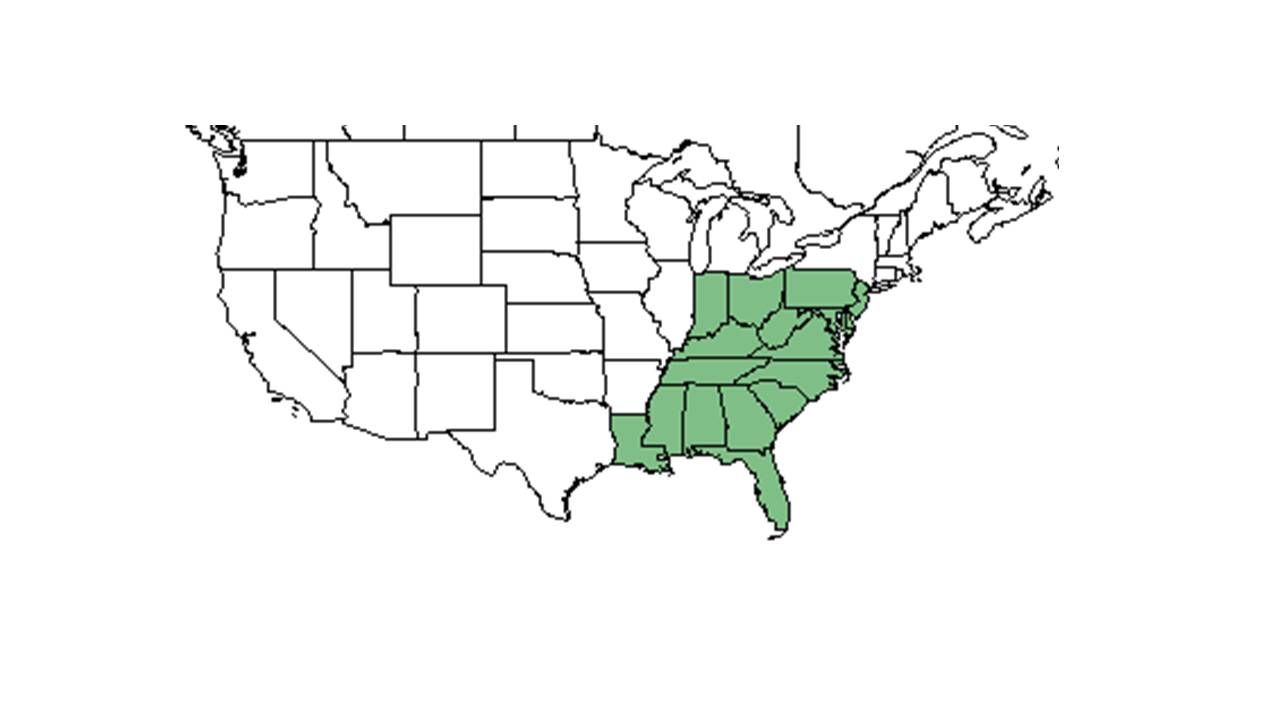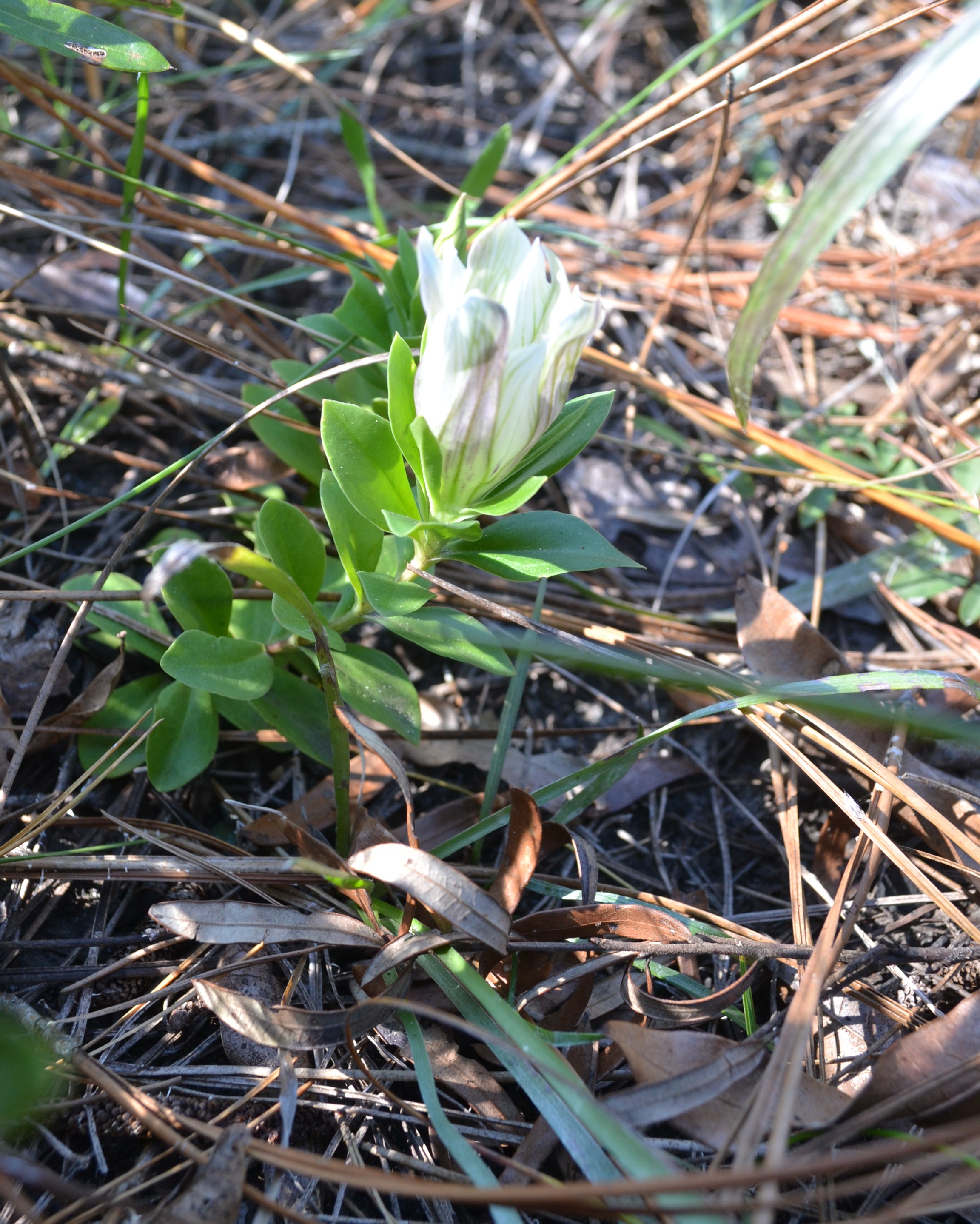Gentiana villosa
| Gentiana villosa | |
|---|---|
Error creating thumbnail: Unable to save thumbnail to destination
| |
| Photo taken by Gil | |
| Scientific classification | |
| Kingdom: | Plantae |
| Division: | Magnoliophyta - Flowering plants |
| Class: | Magnoliopsida – Dicotyledons |
| Order: | Gentianales |
| Family: | Gentianaceae |
| Genus: | Gentiana |
| Species: | G. villosalink title |
| Binomial name | |
| Gentiana villosa L. | |

| |
| Natural range of Gentiana villosa from USDA NRCS Plants Database. | |
Common name: Striped gentian
Contents
Taxonomic notes
Synonyms: Dasystephana villosa (Linnaeus) Small; Pneumonanthe villosa (Linnaeus) F.W. Schmidt
Description
"Annual or perennial herbs. Stems erect, teret, often in clumps. Leaves opposite, entire, sessile to short-petiolate. Flowers solitary or in congested cymes, pedicellate or sessile. Calyx 4-5 lobed, tubular; corolla cleft ½ or less its length, campanulate, funnelform or tubular, lobes the same number as the sepals, often connected with a thin tissue (pleats); stamens 4-5, anthers free, or coherent in a ring around the style; stigmas erect, recurved in age, style short or absent. Capsule laterally compressed, elongate, stipitate; seeds 0.6-2.2 mm long." [1]
"Perennial with thick fleshy roots. Stem strict, ascending to erect, 1.5-5 dm tall. Leaves elliptic, 4-8.5 cm long, 1-3 cm wide, acute to obtuse, base attenuate to cuneate, sessile to short-petiolate. Flowers essentially sessile, solitary or in compact, 3-7 flowered cymes. Calyx 2-3.3 cm long, tube 7-13 mm long, lobes linear to narrowly elliptic, 10-20 mm long, to 3 mm wide, acute, erect to ascending; corolla greenish to yellowish white, usually tinted or striped with purple, funnel form, 3-4.2 cm long, tube 2.5-4 cm long, lobes 5, triangular-ovate, the corolla, anther adherent; stigmas spreading-recurved, style 3-5 mm long. Capsules ellipsoid to oblong, laterally compressed, 1.7-2.5 cm long, stipitate; seeds brown, ellipsoid to oblong, faintly reticulate, 1.1-1.3 mm long." [1]
Distribution
Gentiana villosa can be found from southeast Pennsylvania west to northern Kentucky and western Tennessee, and south to the Florida panhandle and eastern Louisiana.[2]
Ecology
Habitat
Generally, G. villosa grows in sandhill or pocosin ecotones and upland forests.[2] This species has been found in mixed woodlands, secondary, brushy pine-oak upland woods, longleaf pine-turkey oak sand ridges, and hillsides.[3] It has been observed growing in rich, moist, humus in shaded locations. Associated species include Pinus palustris and Quercus laevis.[3]
Phenology
It generally flowers from late August until November.[2] This plant has been observed to flower from October to November.[3]
Seed dispersal
This species is thought to be dispersed by gravity. [4]
Fire ecology
This plant is found in areas that are annually burned.[3]
Conservation and management
Cultivation and restoration
Photo Gallery
References and notes
- ↑ 1.0 1.1 Radford, Albert E., Harry E. Ahles, and C. Ritchie Bell. Manual of the Vascular Flora of the Carolinas. 1964, 1968. The University of North Carolina Press. Print.
- ↑ 2.0 2.1 2.2 Weakley, A. S. (2015). Flora of the Southern and Mid-Atlantic States. Chapel Hill, NC, University of North Carolina Herbarium.
- ↑ 3.0 3.1 3.2 3.3 Florida State University Robert K. Godfrey Herbarium database. URL: http://herbarium.bio.fsu.edu. Last accessed: June 2014. Collectors: R.K. Godfrey, J. P. Gillespie, A. F. Clewell, R. Kral, Betty Pierce, Gary R. Knight, Rodie White, Richard R. Clinebell II, and R. Komarek. States and Counties: Florida: Jackson, Leon, Liberty, and Madison. Georgia: Grady and Thomas.
- ↑ Kirkman, L. Katherine. Unpublished database of seed dispersal mode of plants found in Coastal Plain longleaf pine-grasslands of the Jones Ecological Research Center, Georgia.
